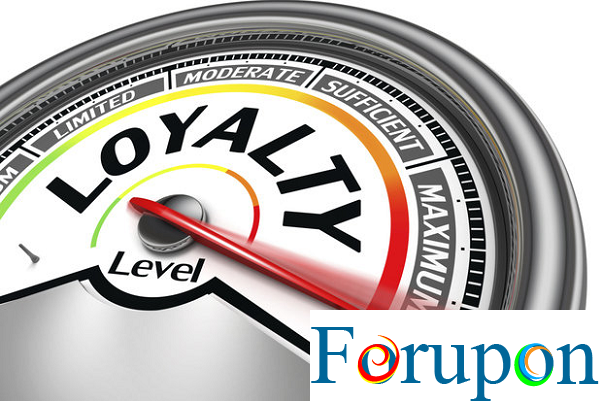For upon |In today’s digital age, consumers have access to an unprecedented level of information. Never before has it been so easy to find information that can potentially make or break a purchase decision. Social proofing, user reviews and price comparison sites can all form part of the buyer journey, which impacts not only the digital sphere. In August 2018, Retail Week reported that 76% of consumers research online before making a purchase, either online or in-store. This has resulted in significant challenges for brands to maintain relationships and achieve loyalty.
Brands have traditionally tackled customer loyalty with financial reward systems, and many still do. But in this age of digitalisation, we believe that traditional loyalty schemes should be left behind; a fundamental new approach to loyalty is required.
WHAT’S WRONG WITH FINANCIAL REWARD?
Loyalty hinges on trust, perceived quality and shared values. To build a relationship as a brand, we need to understand our audience and what triggers them. Much like in a personal relationship, it helps to acknowledge someone’s actions. Brands should acknowledge consumer behaviour. And, most importantly, much like in personal relationships, things shouldn’t revolve around money. In personal relationships, most of us know there’s a limit to buying someone’s loyalty with fancy extras like holidays, expensive bags or cars. So why would a consumer be any different? Why would they be after a financial reward for already having invested in a brand?
The decline of the physical store front and the rise of digital platforms for buying and engagement has driven a consumer expectation that brands could and should be better at offering self-service, convenience and personalisation.
This is where most brands struggle to cope and where the biggest opportunity lies. Even though loyalty programs offer a wealth of data, quite often disjointed touchpoints and data sources don’t maximise the value that these can provide. Neither do the majority of brands demonstrate that their loyalty approach offers more on the experience side; it’s mostly used to reward level of spend.
Loyalty should be about how to build a longer term relationship which, in itself, requires a life cycle approach instead of a transactional one. It is a dilemma for most marketers seeking short term results, as a more strategic and longer term view is required in the business to change the approach.
SO, WHERE DO WE START?
We firmly believe that brands can achieve loyalty by, firstly, better understanding their target audiences and their needs. It’s like any relationship – in order to create trust, it helps to put yourself in their mindset.
We recommend that brands become obsessed with audience insights; utilising insight can steer considerations on how to offer higher degrees of personalisation across all stages of interaction and channels in use. Even more importantly, it will also help to address the orchestration across channels.
This will, ultimately, deliver on brand trust and perceived quality, as demonstrated by successful brands such as Netflix and Spotify with their recommendation services. But in other industries an even simpler approach (such as thanking your customers at the right time), might be sufficient.
As our research confirms, brands need to step up their game when it comes to achieving consumer loyalty. Brands are sitting on a goldmine of consumer data that can tackle the challenge – you just need to know what to do with it.


Comments are closed.